Low-density lipoproteins are lowered in women. Reducing low-density lipoprotein cholesterol
What should a person do if biochemical analysis indicates that LDL cholesterol is reduced? What it is? Every person should know the answers to these questions, since disturbances in the concentration of cholesterol in the blood are observed in large number adults, and this requires the prescription of drug and non-drug treatment.
The main fats in the blood: cholesterol, triglycerides and high and low density lipoproteins. A complex of proteins and fats, or simply lipoprotein, allows fats to be transported throughout the body.
A significant portion of lipids are present in the blood in various forms
Moreover, lipoproteins themselves are a fairly diverse group of molecules with different structures and functions:
- Lipoproteins high density(HDL) is a group of molecules involved in the transfer of cholesterol and other lipids from peripheral tissues to the liver, where they can be used to perform important functions. biological functions. Due to this, these HDLs prevent the deposition of lipids in blood vessels and have an anti-atherosclerotic effect, and therefore, increasing their concentration in the blood is important factor protection against heart and vascular diseases.
- Low and very low density lipoproteins (VLDL and LDL) on the contrary, they transfer cholesterol and other fats from the liver to adipose tissue, organs and vessels, which can lead to the development of atherosclerosis if their norms in the blood are exceeded. At the same time, the patient’s risk of developing coronary disease heart, disorders cerebral circulation etc.
It is important to note that all fats play a key role in the functioning of many internal organs, and are indispensable for maintaining human health.
In this regard, determination of LDL cholesterol according to Friedwald plays an important role in clinical practice and is indicated for a large number of patients.
To determine low-density cholesterol, which plays a negative role in the development of heart and vascular diseases, Friedwald derived a special linear formula: Low-density lipoproteins are equal to the difference between total cholesterol and the sum of HDL and triglycerides, divided by 5:
LDL = Total cholesterol – (HDL + TG/5).
It is very important that the level of triglycerides in a person’s blood is below 400 mg/dL. If indicators are measured in mmol/l (the most common indicator), then a formula is used in which the difference in indicators is divided by 2.2 rather than by 5. It is important to remember that there are other types of formulas for determining the concentration of LDL in the blood, which , most often used when triglyceride levels are more than 400 mg/dL.
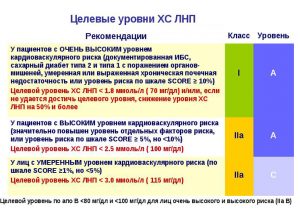
Calculation using the Friedwald formula
An increase in the amount of low-density lipoproteins is one of the key risk factors for the development of coronary artery disease, myocardial infarction, encephalopathy and other diseases with atherosclerotic vascular lesions.
Content changes
The concentration of lipids in the blood may change if a person has various diseases. An increase in LDL levels may occur with:
- Excess body weight and obesity of any severity.
- Hereditary disorders fat metabolism.
- Damage to kidney function in various diseases.
- Long-term consumption of foods rich in fat.
- Taking some medicines(androgens, glucocorticoids, combined oral contraceptives, beta blockers, etc.).
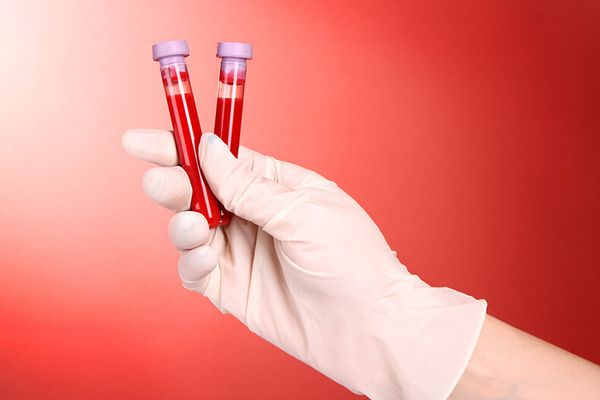
Lipidogram - analysis for lipid spectrum blood
It is possible that the patient's level of low-density cholesterol will be reduced. Similar values may occur if the following conditions are observed:
- Prolonged fasting or lack of fat in the diet.
- Chronic stress associated with various conditions.
- Chronic types of anemia.
- Congenital dysfunctions thyroid gland, cystic fibrosis.
- Absorption disorders nutrients in the gastrointestinal tract, etc.
What does this mean and what to do in such situations? If a person experiences changes in blood lipid levels, it is necessary to consult a doctor and undergo a clinical examination using auxiliary diagnostic procedures.
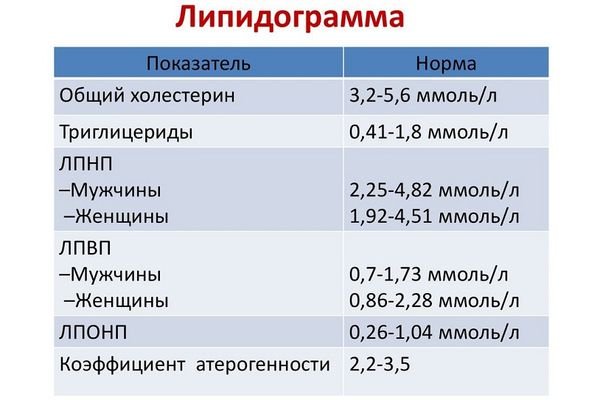
A lipidogram is a biochemical blood test that allows you to objectively assess disorders in fat exchange process
Health effects
Hypocholesterolemia means lower cholesterol and LDL in the blood normal indicators in the population. In this case, it is very important to assess the degree of decrease in indicators. If blood lipids, particularly low-density lipoproteins, are slightly lower normal values, then this is not dangerous, since, most often, problems arise if their number is increased. At the same time, a person’s chance of developing severe cardiovascular diseases(coronary heart disease, myocardial infarction, etc.).
Control lipid profile blood is a prerequisite for the prevention of cardiovascular diseases in people at risk for this pathology.
If the decrease in lipids is significant, then the patient may develop unpleasant symptoms in the form of weakness, dysfunction gastrointestinal tract, suppression of reflexes nervous system, mood disorders with its decrease and the development of depression, decreased libido. Similar situation requires the appointment of rational therapy.
How to treat?
Therapy similar condition is a serious and difficult problem. When identifying reduced performance fats in plasma, a person must definitely consult his doctor, since the causes of this condition may be different. It is important to conduct a full clinical examination to identify possible liver diseases, infectious pathology and serious errors in a lipid-deficient diet.

Timely research will allow you to detect the increase in cholesterol in the blood and take timely measures
The main point of treatment is maintaining a proper diet, which is based on foods with a relatively high amount of fat, such as fatty fish, meat, egg yolk etc. It is very important to constantly carry out a biochemical blood test with the determination of cholesterol and LDL according to Friedwald in order to avoid a condition in which the level of fats will need to be reduced.
Cholesterol and lipoproteins are essential components of the human body, participating in a large number of biological functions. A decrease in these indicators in the blood can lead to the development unpleasant symptoms, up to serious disruption of the functioning of internal organs. Therefore, the definition of cholesterol according to Friedwald is good way control of fat metabolism and identification of patients with similar diseases.
A blood test for cholesterol and LDL allows you to determine whether their levels have deviated from the norm. If this happened in big side This means that atherosclerosis develops in the body, which reduces the elasticity of blood vessels and causes increased thrombus formation, blockage of an artery or vein with a blood clot. Low level cholesterol is also dangerous, since without it many processes cannot occur in the body.
Cholesterol is a fatty natural alcohol, most of which is synthesized by the liver, the rest enters the body from food. With the help of this substance, the membranes of all cells of the body are formed. Steroid hormones, including sex hormones, are also synthesized on its basis. In addition, cholesterol has a positive effect on strengthening bones, participates in the functioning of the immune, nervous, digestive systems, performs a number of other very important functions.
But if the amount of cholesterol exceeds the norm, it begins to fall out on the walls of blood vessels and form growths, reducing the elasticity of the arteries and veins. This causes disruption of blood flow and can cause blockage of the vessel with a blood clot. This problem is explained by the fact that cholesterol is not able to dissolve in water. To get to cells, it forms compounds with lipoproteins of different densities - medium, low and high. This is the name given to compounds that consist of lipids and proteins.
Low-density lipids (LDL or LDL) and medium density are responsible for transporting cholesterol through the blood to cells. After the cells take up the amount of cholesterol they need, the remains are picked up by high-density lipoproteins (HDL or HDL) and taken to the liver for processing.
You should also know that LDL doesn't dissolve very well either. Therefore, along the way, cholesterol precipitates on the walls of blood vessels. U healthy person Enzymes are located near the vascular walls, which the sediment destroys. But with age, these components become less and less, and the cholesterol deposit gradually becomes attached to the vascular walls. Especially if HDL in the body is below normal, while the amount of LDL is increased.
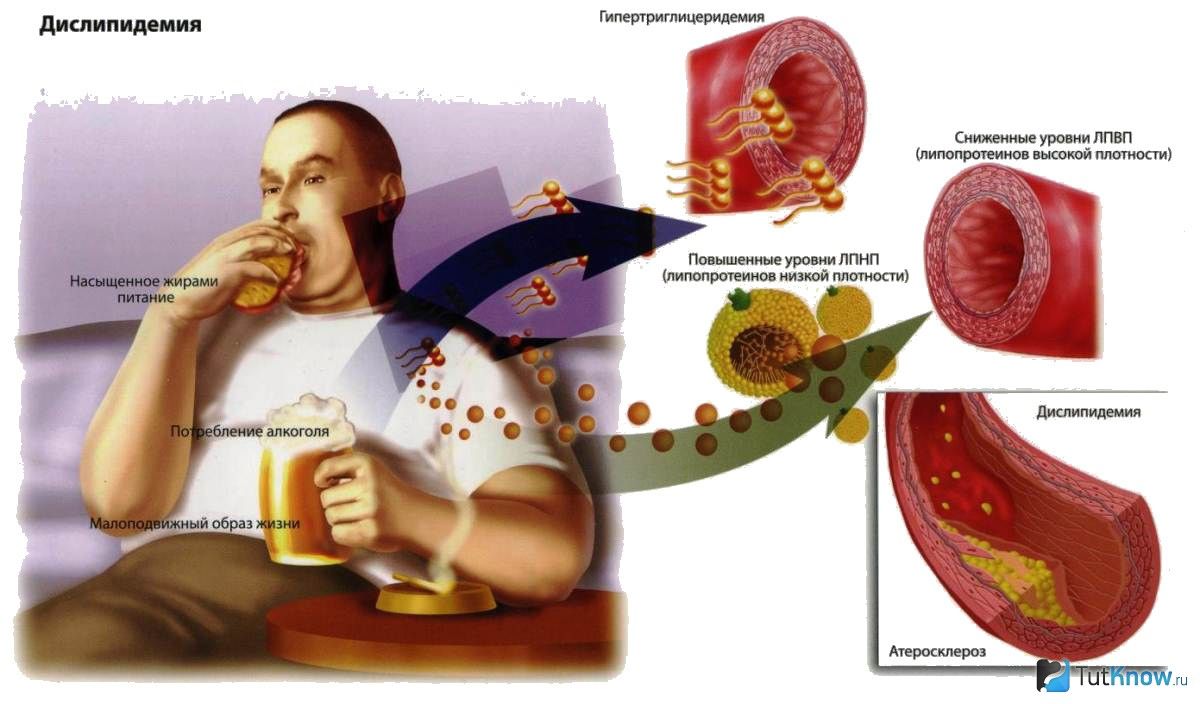
At first, the growth that settles on the vascular walls is characterized by a loose consistency. At this stage it can still be dissolved. But there is also a danger here: at any moment a small part of the plaque can come off and clog the vessel. This means that the tissues it serves will be deprived of nutrition, which will lead to their death. That is why atherosclerosis of the vessels of the brain or heart is the cause of heart attacks, which are often fatal.
As the plaque forms, it becomes hard and replaces the vascular wall. As the walls are destroyed, they bleed, which leads to increased formation of blood clots: this is how the body tries to heal the blood vessels. Over time vascular walls They lose elasticity and become brittle, which can result in hemorrhage at any time.
How to decipher the results
The development of atherosclerosis can be suspected if a person leads a sedentary lifestyle, is obese, and prefers foods with high levels of animal fats. Diabetics, as well as those people who have problems with the thyroid gland, liver, and kidneys, are at risk.
You should also know that LDL cholesterol levels begin to rise in men, while HDL cholesterol levels begin to fall after the age of twenty, and in women after menopause. Constant stress, smoking, alcohol are also causes high content cholesterol and LDL, and low HDL.
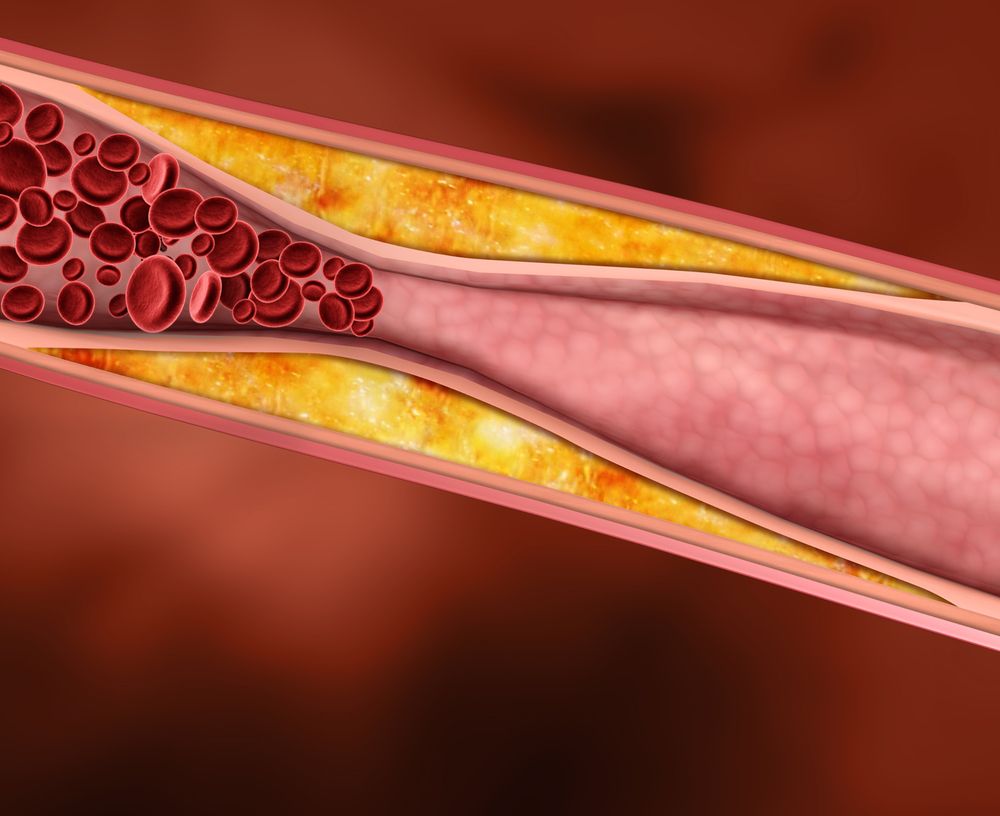
Doctors recommend that women and men have a lipid profile at least once a year. Since atherosclerosis does not manifest itself in any way at the initial stages, this will allow you to promptly notice the deviation of cholesterol, HDL, LDL from the norm, and prevent the development of a heart attack, stroke or other serious problems.
A lipidogram is a study that allows you to determine the level of cholesterol, LDL, HDL in the blood, as well as understand the state of fat metabolism in the body. It is carried out using a biochemical blood test.
First, the level of total cholesterol in the blood of women and men is determined. Standards may vary from laboratory to laboratory. Therefore, you definitely need to pay attention to the indicated numbers, which are located next to the decoding of personal data: these are the standards adopted in the laboratory where the analysis was carried out.
It is believed that the norm of total cholesterol in the blood of women and men should be:
For a doctor to get a clear picture of the state of lipid metabolism, knowledge about the level of total cholesterol alone is not enough. You also need to know the concentration in blood HDL and LDL. Therefore, he orders a blood test for the amount of lipoproteins of different densities.
The LDL values below indicate the following conditions:
- up to 2.5 mmol/l (low probability of myocardial infarction);
- 2.6 - 3.3 mmol/l - optimal indicators;
- 3.4 - 4.1 mmol/l - increased values;
- 4.1 – 4.9 mmol/l – high concentration;
- more than 4.9 mmol/l – very high risk of heart attack.
The doctor should also know how much high-density lipoprotein a person contains in his blood. Number of HDL in healthy body women should be above 1.68 mmol/l. In a man, the normal HDL level in the blood exceeds 1.45 mol/l.
Reasons for deviations
Increased amounts of cholesterol and LDL, as well as low amounts of HDL in women and men can be caused by the following reasons:
- unhealthy diet, when food contains a high level of carbohydrates, trans fats, and very little fiber, pectin, vitamins, minerals, vegetable fats;
- obesity, overeating;
- alcohol abuse, smoking;
- bile stagnation and other liver problems;
- kidney diseases;
- some medications;
- problems with the pancreas, thyroid gland;
- increased production of hormones synthesized by the adrenal cortex;
- some viral infections;
- in women - pregnancy.
Low cholesterol levels in women and men are also dangerous because they indicate the development of serious diseases. Such values are observed after long fasts, due to serious burns. It happens when the body is unable to digest fats normally, which indicates a serious metabolic disorder and requires medical care.
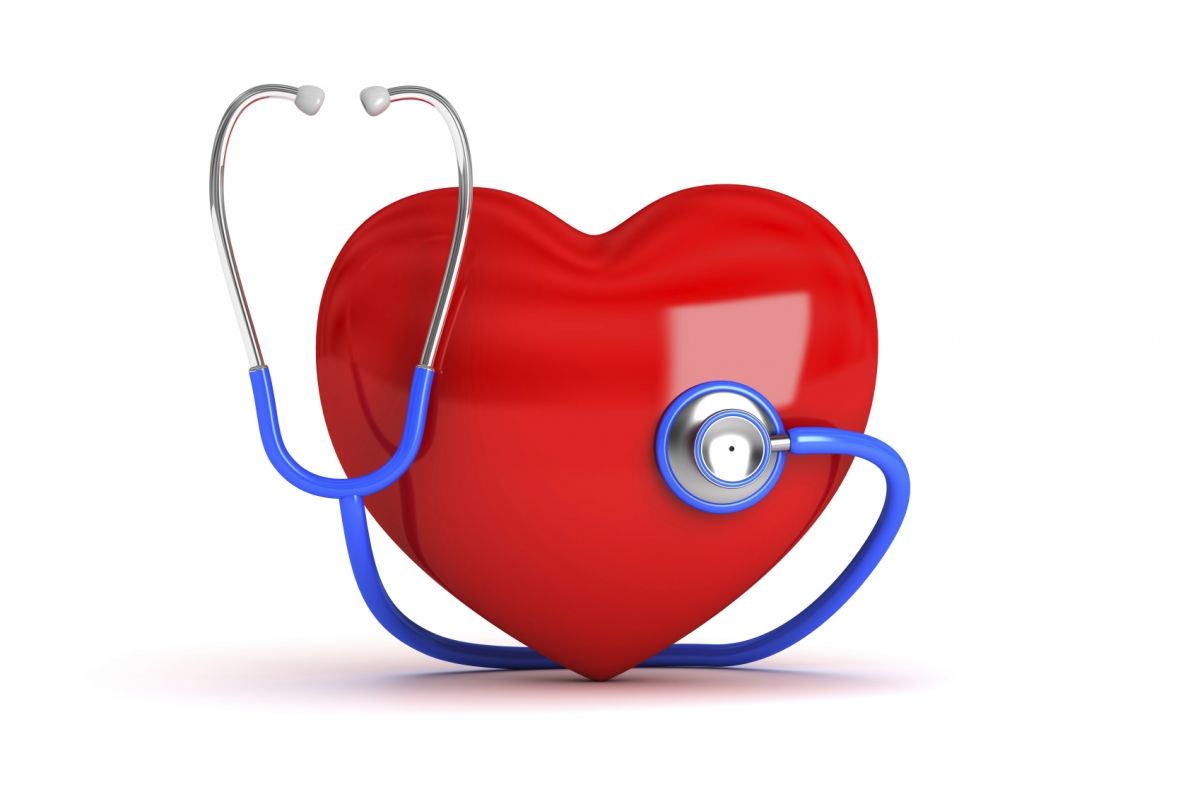
Cholesterol can be reduced in tuberculosis, chronic heart failure, acute infectious diseases, blood poisoning, cirrhosis, and oncology. In this case, the person needs urgent medical attention. Otherwise there will be death.
Biochemical analysis shows low cholesterol levels in vegetarians. This is due to the fact that their food does not contain animal fats. Therefore, vegetarians should take care of the presence of cholesterol-rich foods in their food.
The interpretation of the analysis may show a deviation from the norm if the person took any medications (including contraceptives) before the analysis. You should also not subject your body to physical activity before donating blood.
After the doctor receives a transcript of the biochemical analysis, if the results are unsatisfactory, he will prescribe treatment based on individual characteristics body. In addition to taking medications, the patient is required to follow a diet that will reduce or increase the level of natural fatty alcohol in the body (depending on the nature of the disease). If you do not adhere to it, treatment with medications alone may be ineffective.
IN human body contains high and low density lipoproteins. Simply put, good and bad cholesterol. The first is produced only in the liver, and the second can enter the bloodstream from food consumed. HDL performs very important functions for life, bad cholesterol LDL at high level content in the blood forms plaques, which subsequently clog blood vessels, leading people to strokes and heart attacks.
This indicator cannot be measured just by looking at a person. Deviation from the norm manifests itself in the form of symptoms of atherosclerosis, and to ensure that cholesterol is to blame, you need to do a biochemical blood test. The conditions for surrender include fasting for the last 12 hours. Tests can be taken from a vein or from a finger. Thus, the level is determined good cholesterol, bad cholesterol and triglycerols. Those at risk should check these indicators with great regularity.
For every person cholesterol LDL normal individual, but it varies within certain limits. LDL levels are divided into:
- Optimal – less than 2.6 mmol per liter of blood;
- Close to optimal – up to 2.6 to 3.3 mmol;
- Borderline high – from 3.4 to 4.1 mmol;
- High – from 4.1 to 4.9 mmol;
- Very high – more than 4.9 mmol.
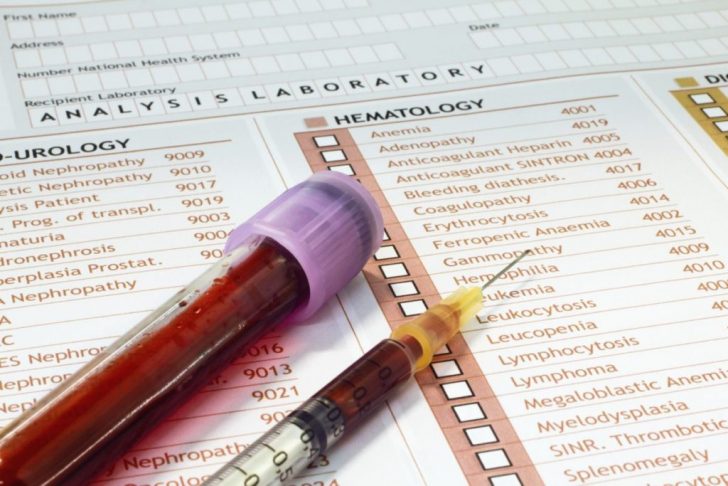
When a person first receives test results and sees that LDL cholesterol is elevated, he immediately begins to panic about what this means and how to deal with it. The reason for the increase in this indicator is most often hereditary predisposition, as well as eating large quantity fatty foods. But most people with cholesterol problems have both factors.
Elevated LDL cholesterol: other causes
These include kidney problems - inflammation, which subsequently develops nephrotic syndrome, and renal failure. If the liver becomes ill (cirrhosis, hepatitis), bile stagnates, or gallbladder there are stones, this also negatively affects the increase in low-density cholesterol. Plays a big role in this matter cancer pancreas and prostate, diabetes mellitus.
A person may be to blame for a sharp increase in blood cholesterol levels by consuming large doses alcohol and obesity due to poor nutrition. By the way, eggs and kidneys, which contain cholesterol, cannot increase its level in human blood too much; this is done by foods with saturated fats - pies and cakes, red meat, biscuits and cream.
If life is associated with a lack of active movement, bad cholesterol increases, and good cholesterol, on the contrary, decreases. This also subsequently leads to obesity and the same problems with cholesterol. It should also be noted that gender plays a big role in this, since men are more susceptible increase in LDL, and with age, the risk of atherosclerosis increases.
If analysis LDL cholesterol shows reduced indicators, this happens when a person receives burns over large areas of the body, suffers from acute infectious diseases, cancer bone marrow, diseases of the liver, thyroid gland, lungs. In addition, a decrease in LDL levels indicates that a person is eating foods without fat and cholesterol and possibly taking certain medications.
It is not safe for a person when cholesterol increases, but even when it decreases greatly, this does not bode well.

High LDL cholesterol – what does it mean?
As high-density lipoprotein levels increase, the risk increases significantly:
- artery blockages cholesterol plaques, that is, the occurrence of atherosclerosis;
- damage to the arteries that carry oxygenated blood to the heart - coronary disease;
- pain in the chest due to insufficient blood pumping - angina pectoris;
- deterioration of blood access to the heart, due to which the heart muscle dies and myocardial infarction occurs;
- blockages in the arteries that carry blood to the brain, causing cell death and stroke.
Understand what the patient has high cholesterol Even a doctor can’t do it without test results. But a person usually goes to the hospital if he has symptoms of atherosclerosis:
- angina pectoris;
- blood clots;
- tearing blood vessels leading to mini-stroke;
- pain in the legs during physical activity due to narrowed blood vessels;
- heart failure as a result of plaque rupture and damage to the integrity of the arteries;
- the appearance of yellow spots under the eyes - xanthoma.
Triglycerols in the blood
Another type of lipoprotein is triglycerol, which acts as the main source of energy for cells. Their entry into the body is due to the consumption of food. Their synthesis occurs in the liver and intestines, as well as in adipose tissue.
The level of triglycerols, like LDL cholesterol, largely depends on the age of the patient. An analysis for this indicator is carried out in the diagnosis of atherosclerosis and other diseases.
Until the age of 15, boys have lower triglycerol levels than girls by approximately 0.07 mmol per liter of blood. In this case, the norm for females is about 1.48 mmol. Throughout the rest of life, the lower and upper thresholds of normal triglycerides are higher in men than in women. For example:
- 30 years: M 0.56-3.01 F 0.42-1.63
- 40 years: M 0.61-3.62 F 0.45-1.99
- 50 years: M 0.65-3.70 F 0.52-2.42
- 60 years: M 0.65-3.23 F 0.62-2.96
- 70 years: M 0.62-2.94 F 0.68-2.71.
If triglycerols are elevated in the blood, this indicates the possibility of coronary heart disease, atherosclerosis, obesity, renal failure, gout, Down syndrome, alcoholism, diabetes mellitus and other diseases. Sometimes results may be affected by pregnancy, use hormonal drugs and oral contraceptives.
Indicators with numbers below normal are visible during strokes, poor nutrition, chronic diseases of the lungs and thyroid gland, reliance on vitamin C.

First of all, when LDL cholesterol is higher than good cholesterol, you need to change your lifestyle. In the morning or at gym should be done physical exercise, thereby bringing body weight to normal. The quality of sleep is very important, that is, you need to sleep at least 8 hours. Quitting smoking and drinking alcohol will also greatly improve the patient's well-being. Fat and junk food need to replace the right products with lots of greens, fresh vegetables and fruits, grains, meat and fish.
Doctors say that patients with a predisposition to atherosclerosis will not be able to improve the situation only in these ways. You will also need drug treatment aspirin, niacin, statins and other medications.
Taking care of your health is the business of every person, therefore, when the first alarming symptoms you need to seek help from specialists as quickly as possible. Independent work over oneself is no less important in such a matter as getting rid of increased bad cholesterol.
Video about cholesterol
413 0
Patients ask what to do if LDL cholesterol is elevated, what its normal level should be. The abbreviation LDL stands for low-density lipoprotein. Lipoprotein (or lipoprotein) is a conglomerate of proteins and lipids.
How is LDL cholesterol determined in the body?
Based on their density, lipoproteins are divided into the following types:
- high-density lipoproteins, which perform the function of transporting cholesterol from peripheral tissues to the liver;
- low-density lipoproteins, responsible for transporting cholesterol and other substances from the liver to peripheral tissues.
There are also medium- and very low-density lipoproteins that transport substances from the liver to the tissues.
 Low-density lipoproteins, abbreviated LDL, are the most atherogenic formations, that is, substances that provoke the development of atherosclerosis. This type of lipoprotein carries the so-called “bad” cholesterol. When LDL cholesterol, or “bad” cholesterol, is elevated, it means the patient has a greater chance of developing atherosclerosis.
Low-density lipoproteins, abbreviated LDL, are the most atherogenic formations, that is, substances that provoke the development of atherosclerosis. This type of lipoprotein carries the so-called “bad” cholesterol. When LDL cholesterol, or “bad” cholesterol, is elevated, it means the patient has a greater chance of developing atherosclerosis.
Atherosclerosis is chronic disease arteries, in which they become clogged due to the deposition of cholesterol resulting from a violation of protein-fat metabolism in the body. The causes of early death from cardiovascular diseases, namely myocardial infarction and stroke, often lie in atherosclerotic changes in blood vessels.
Diseases characterized by increased levels of low-density lipoproteins may also be hereditary. Such cases include hereditary hyperlipoproteinemia. This is the case when LDL cholesterol in the blood is elevated due to a family history of the disease.
 Friedwald's formula. Determining LDL cholesterol levels plays a role important role in diagnosing the patient’s health condition and in his subsequent treatment. To do this, use the Friedwald formula. It is based on the quantitative ratio of low-density lipoproteins, total cholesterol (good and bad) and triglycerides (fats).
Friedwald's formula. Determining LDL cholesterol levels plays a role important role in diagnosing the patient’s health condition and in his subsequent treatment. To do this, use the Friedwald formula. It is based on the quantitative ratio of low-density lipoproteins, total cholesterol (good and bad) and triglycerides (fats).
According to the Friedwald algorithm, low-density lipoproteins (compounds of lipids and proteins) are equal to the difference between total cholesterol and the sum of HDL and triglycerides divided by 5.
LDL = total cholesterol- (HDL + TG/5).
In addition to the Friedwald formula, there are a number of other algorithms for calculating LDL levels.
What is the LDL level?
What is the normal level of LDL? The American Heart and Vascular Association has developed recommendations based on carefully calibrated LDL levels. LDL cholesterol levels:

The given data are conditional indicators developed on the basis of statistical data on diseases and mortality from cardiovascular diseases resulting from high content low density cholesterol in the blood.
It should be noted that a number of groups of people who have very high performance LDL do not suffer from cardiovascular diseases caused by blockages of blood vessels.
How can you reduce cholesterol?
How to lower cholesterol? The treatment strategy aimed at lowering LDL levels is a conglomeration of both drug and non-drug options.
Non-drug methods
 These ways are directly related to the patient’s diet and lifestyle and can be used independently not only by those who are concerned about how to lower cholesterol, but also by people interested in prevention.
These ways are directly related to the patient’s diet and lifestyle and can be used independently not only by those who are concerned about how to lower cholesterol, but also by people interested in prevention.
- reduce caloric intake;
- switch to a diet with low content animal fats;
- eat less easily digestible carbohydrates (sweets);
- refuse fried foods;
- get rid of bad habits such as smoking and drinking alcohol;
- include polyunsaturated foods in your diet fatty acid(Omega-3) contained in oily fish, linseed oil;
- eat fresh vegetables, legumes, herbs, fruits, berries;
- increase the level of physical activity;
- protect yourself from stress.
 What to do if low-density cholesterol is elevated? In some cases, patients are prescribed a hypocholesterolemic diet, balanced in the amount of fats and fast carbohydrates. In some, not particularly advanced cases, not burdened by complications, following a hypocholesterolemic diet is quite enough to eliminate the problem.
What to do if low-density cholesterol is elevated? In some cases, patients are prescribed a hypocholesterolemic diet, balanced in the amount of fats and fast carbohydrates. In some, not particularly advanced cases, not burdened by complications, following a hypocholesterolemic diet is quite enough to eliminate the problem.
If non-drug treatments do not work within 3 months, the patient is prescribed medication.
Medicinal methods
For the described disorders, patients are prescribed lipid-lowering drugs.
Taking the remedies described below can only have an effect if you follow the above rules and diet.
Lipid-lowering drugs are therapeutic agents used to lower LDL levels. Based on the nature of their effect on the body, they are divided into many groups; below are only the main ones.
 The LDL level in the body is restored with the help of statins. These include:
The LDL level in the body is restored with the help of statins. These include:
- Lovastatin;
- Simvastatin;
- Pravastatin;
- Fluvastine;
- Rosuvastin, etc.
Fibrates reduce harmful cholesterol in the blood and lower triglyceride levels. Triglycerides are fats that provide energy to cells, but at elevated concentrations they increase the risk of cardiovascular disease and pancreatitis. Fibrates include:
- Clofibrate;
- Bezafibrate;
- Fenofibrate;
- Ciprofibrate.
Taking these medications increases the risk of gallstones.
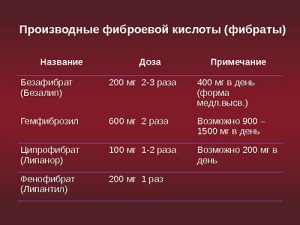 There are drugs that enhance excretion, that is, the release of bile acids that are involved in the processing of cholesterol. Due to this action, the level of cholesterol in the blood decreases. This type of drugs includes:
There are drugs that enhance excretion, that is, the release of bile acids that are involved in the processing of cholesterol. Due to this action, the level of cholesterol in the blood decreases. This type of drugs includes:
- Cholestyramine;
- Colextran;
- Kolesevelam.
It must be remembered that all of the drugs listed can only be used as prescribed by the attending physician. All of the above treatment methods are given in a simplified, schematic form and offer only approximate information for lowering LDL, and therefore cannot be taken as a guide to self-medication.
For human health, it is very important to understand the mechanism of nutrient absorption in the body, the role healthy eating, correct lifestyle in general. The content of harmful cholesterol in the blood in many cases is a pathology provoked by violations of the regime.
Reducing the level of bad cholesterol is carried out primarily through a balanced diet and healthy image life.
